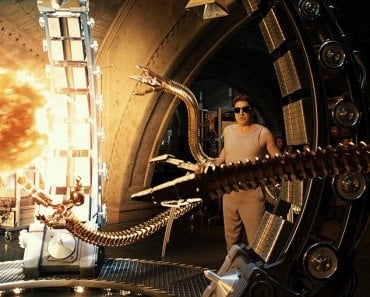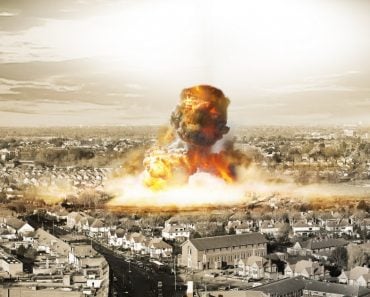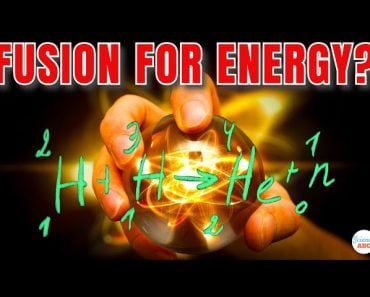Table of Contents (click to expand)
Nuclear reactors can run for long periods of time without human interference, but they are not designed to do so. In the event of a natural disaster or a power outage, backup systems would kick in to keep the reactor stable until the fuel runs dry. However, if the backup power is also compromised, the reactor would eventually heat up and either explode or melt through the reactor chamber.
“The unleashed power of the atom has changed everything save our modes of thinking, and we thus drift toward unparalleled catastrophes.”-Albert Einstein
On April 26, 1986, the world experienced its first major nuclear disaster. This was none other than the Chernobyl disaster in Ukraine. So bad was the disaster that the half-million Soviet soldiers were dispatched to help contain the radiation. Chernobyl, to its credit, was not a small nuclear power plant. It was one of the largest nuclear power plants of its time and had the best engineers working to maintain it. Now, with people running Chernobyl, the blast still occurred in 12 hours. How long would a nuclear reactor function properly before it failed if humans were removed from the equation?
Recommended Video for you:
Working Of A Nuclear Power Plant

In our explanation, we will only be considering the working of a thermal nuclear reactor. Thermal nuclear reactors can broadly be classified into three main categories. The Containment Structure houses the main nuclear reactor and the steam generator. It is a building that is always made from reinforced concrete to ensure that radiation is always contained within the structure.
The Nuclear Reactor is where nuclear fission takes place. Nuclear fission is a chemical process in which radioactive material breaks down chemically to produce extreme heat. This heat that is generated is then transferred to water, which circulates within the nuclear reactor and carries heat to the steam generator. Even though the water in the nuclear reactor is exposed to extreme heat, it never turns into steam. This is because the pressure at which the water is kept inside the nuclear reactor is 160 bar (atmospheric pressure), preventing it from turning into steam.
The Steam Generator is responsible for taking away incoming heat from the nuclear reactor. The steam generator also contains water, but it must be remembered that water from the reactor and the water present within the steam generator never mix. This is because water from the nuclear reactor is radioactive and never leaves the nuclear reactor. Water in the steam generator is converted to steam, which is carried to the generators.
The Electrical Generators are responsible for the generation of electricity. This is possible when steam is brought in from the steam generator. Steam entering the generator comes in at very high speeds. This helps move the turbine of the generator, which converts the mechanical energy from the turbine into electricity. Once the steam passes through the turbine of the generator, it is sent to a condenser.
A Condenser is usually a system of metallic pipes that come into contact with the steam exiting a generator. Its duty is to cool the steam down, so it shifts back into the water; the cooled down water is then sent back to the steam generator. After cooling down the steam, the water in the condenser carries away the heat to the cooling tower. A Cooling Tower handles the cooling of the incoming water from the condenser. This is usually done with the help of large mechanical fans present within the tower. However, even with the fans, a certain amount of water will evaporate over time. Another property of the cooling tower is to provide a constant fresh supply of cool water, when needed, from the reservoir.
Learning From Man-Made Errors And Natural Disasters
To understand the magnitude of the disastrous effects of an unmanned nuclear reactor, let’s take a look back at history. Let’s take a look at the two biggest accidents of all time – Chernobyl and Fukushima.

The Chernobyl Disaster spanned two days from April 25-26 in 1986. It is considered the biggest nuclear disaster of the former Soviet Union. It occurred in the small town of Pripyat, in modern-day Ukraine. The disaster occurred for two main reasons. The first one is that the higher officials had directed the engineers to switch off the safety systems before investigating a power blackout late one night. The second cause is that the reactor core had design flaws, and was arranged in a position, not in line with the safety checklist provided to the engineers. These two factors combined together led to uncontrolled nuclear fission, which resulted in the reactor’s core heating up and causing a catastrophic blast.

The blast and its effects were so deadly that the city of Pripyat was immediately evacuated. Irradiated dust from the blast spread as far as Sweden. To combat the effects of the radiation, the Soviet Union had to immediately dispatch 500,000 trained army personnel to build a 200-meter thick concrete dome to prevent the radiation from spreading. If you think Chernobyl was bad, however, the Fukushima Disaster has actually been given a higher disaster impact rating by the World Nuclear Association.

The Fukushima Daiichi Disaster is the full name for the disaster that occurred on the east coast of northern Japan, in the Fukushima prefecture. It occurred over a span of six days from March 11-16, 2011. The first disaster occurred on March 11, when the shockwaves from an incoming tsunami caused an earthquake of magnitude 9. This resulted in the main power line failing and the reactor cores were immediately shut down; backup electricity from generators was able to keep the cooling system online.
The engineers had time to work on bringing back the main power line. However, what followed on March 16, 2011, was something that no one had prepared for. On this day, a 41-meter tsunami crashed into 3 of the 4 reactors. This washed away all the backup generators, which had been keeping the cooling system up and running. Thanks to better reactor core design, they did not break open, but this resulted in the melting of the reactor chamber base, thus depositing the fuel into the bedrock of that site.
THE ANSWER…..
Now that we have a clearer understanding of man-made errors and natural disasters, let’s try constructing a modern-day scenario of what might happen to nuclear reactors without any human presence in the modern day.


Today’s state-of-the-art control systems ensure that human error is held to a bare minimum. Even without humans, nuclear power plants have automated protocols like SCRAM, which can shut down the reactor completely. The control systems are updated to the point that, as long as mainline and backup power is present, it will keep the reactor in a stable state until the fuel runs dry.
However, in the case of natural disasters, the first thing that would happen is that the main power line would be shut down. If the backup power source is not compromised, then it would kick in as soon the main line fails. The cooling system remains online even if the main power line fails, due to the help of the back-up. Either the backup power runs out of juice or the backup power is also compromised (as in the case of Fukushima) due to a severe natural disaster. This would lead to the reactor core heating up, at which point two possible situations occur. Either the reactor design is weak, which leads to an explosion, like what happened at Chernobyl, or the fuel burns through the reactor and penetrates to the bedrock.
The amount of time an unmanned nuclear reactor would last given the above scenarios would be a week, This time frame has been concluded upon after studying the timeline of failure of Fukushima and Chernobyl.

FUN FACT: Read about the elephant’s foot, the nuclear fuel deposit at the bottom of the Chernobyl plant!













